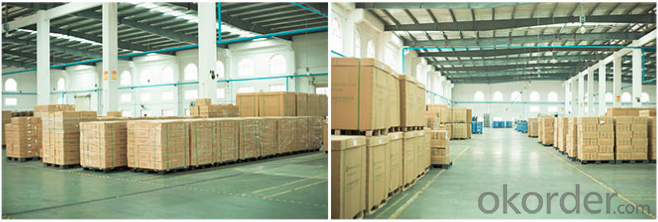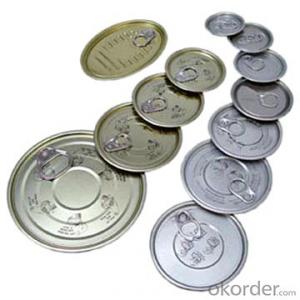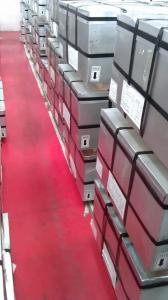Hot Sale Aluminum Material EOE in Different Sizes, 200#
- Loading Port:
- Guangzhou
- Payment Terms:
- TT OR LC
- Min Order Qty:
- 100000 pc
- Supply Capability:
- 100000000 pc/month
OKorder Service Pledge
OKorder Financial Service
You Might Also Like
Specifications
beverage can
1.Size:dia50mm
2.Partial pouring
3.Aluminum
4.OEm & ODM
Name | Beverage can |
Item No. | 200 # |
Shape/type | Round |
Size(mm) | Dia 50 |
Coating | Clear inside & outside |
Material | Aluminum |
Pcs/20 GP’ | 3,710,000 Customize packing: as clients’ requests. |
Features | 1.Used for packaging of beverage,such as juice,soda,energy drink,beer,etc. 2.Coating can be according to customer required.
|
Our packing
We could offer package as customers require, by carton or by wooden pallet.

Our Workshop


FAQ
1.Q: What is the material of EOE?
We can offer both tinplate and aluminum material made EOE;
2.Q:Could you offer samples for our testing?
YES, we could offer sampler for free if needed;
3. Q:Can you make new mold with customized size I need?
YES, We can make mold for you if reach some qty.
- Q: How does tinplate perform in terms of resistance to humidity?
- Tinplate performs exceptionally well in terms of resistance to humidity. The tin coating acts as a protective barrier, preventing moisture from reaching the underlying steel and minimizing the risk of corrosion. This makes tinplate a reliable choice for packaging materials, especially for products that are sensitive to moisture.
- Q: What are the advancements in tinplate technology?
- Some of the advancements in tinplate technology include improved coatings for enhanced corrosion resistance, the development of thinner and lighter tinplate materials, and the introduction of advanced printing techniques for more vibrant and detailed designs. Additionally, there have been advancements in tinplate manufacturing processes, such as continuous annealing and tin-free steel alternatives, which have improved production efficiency and reduced environmental impact.
- Q: How is tinplate used in the cosmetics industry?
- Tinplate is commonly used in the cosmetics industry for packaging purposes. It is used to create metal containers, such as tin cans or tubes, that house various cosmetic products like creams, lotions, or powders. Tinplate's durability and resistance to corrosion make it an ideal material for ensuring the safety and longevity of cosmetic products. Additionally, its attractive appearance allows for branding and customization options, enhancing the overall appeal of the product.
- Q: What are the different coatings used on tinplate?
- There are several different coatings used on tinplate, including tin-free steel (TFS), electrolytic tinplate (ETP), tin-free steel chromium coated (TFS Cr), and tinplate with an organic coating (lacquered tinplate). These coatings serve various purposes such as providing corrosion resistance, enhancing the appearance, and improving the overall durability of the tinplate.
- Q: What is the process for printing on tinplate?
- The process for printing on tinplate involves several steps. First, the tinplate is cleaned and coated with a thin layer of primer to ensure proper adhesion of the ink. Then, the design or artwork is engraved onto a printing plate, typically made of a flexible material like rubber or plastic. This plate is then loaded onto a printing press. The tinplate is fed into the press, and the printing plate transfers the ink onto the tinplate in the desired design. The tinplate is then dried or cured to set the ink. Finally, the printed tinplate can be further processed or converted into various products like cans or packaging materials.
- Q: How does tinplate packaging contribute to product protection against UV rays?
- Tinplate packaging provides an effective barrier against UV rays, as tin is highly opaque and reflective to ultraviolet light. This prevents the penetration of UV rays into the packaging and subsequently protects the product from UV-induced deterioration, such as discoloration, degradation, or spoilage.
- Q: Can tinplate be used for non-packaging applications?
- Yes, tinplate can be used for non-packaging applications. Tinplate's excellent corrosion resistance, ductility, and formability make it suitable for various non-packaging uses such as automotive parts, construction materials, electrical components, and decorative purposes.
- Q: How does tinplate perform in extreme temperatures?
- Tinplate performs well in extreme temperatures as it has high heat resistance and low thermal expansion properties. It can withstand both extremely high and extremely low temperatures without warping or losing its structural integrity.
- Q: Can tinplate be used for decorative purposes?
- Yes, tinplate can be used for decorative purposes as it provides a versatile and aesthetically pleasing material for various applications such as packaging, signage, and art. Its shiny surface and ability to be easily shaped and printed on make it a popular choice for creating visually appealing decorative items.
- Q: What are the common challenges in processing tinplate?
- Some common challenges in processing tinplate include ensuring proper coating adhesion, preventing tinplate corrosion, managing the formation of tin whiskers, and achieving consistent thickness and flatness in the tinplate sheets. Other challenges may include controlling the tinplate's surface quality, preventing contamination during processing, and ensuring proper handling and storage to avoid damage.
Send your message to us
Hot Sale Aluminum Material EOE in Different Sizes, 200#
- Loading Port:
- Guangzhou
- Payment Terms:
- TT OR LC
- Min Order Qty:
- 100000 pc
- Supply Capability:
- 100000000 pc/month
OKorder Service Pledge
OKorder Financial Service
Similar products
Hot products
Hot Searches
Related keywords


























